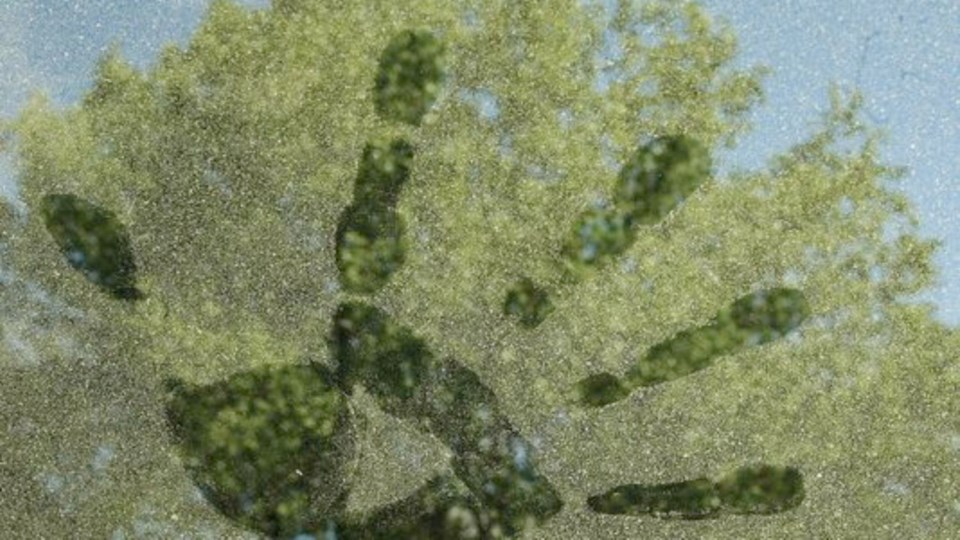At the third sneeze in a row, Nature Boy turned to me and asked: “Are you OK?”
Given the state of the world, it was a reasonable question.
But coronavirus didn’t cause my sneezing fit.
“Pollen,” I sniffed. In the 10 minutes since stepping outside, I had gone from feeling fine to feeling awful. My head felt as it were packed with wool. My eyeballs were jagged rock crystals. Plugged ears and nose added to the discomfort. “I’ll be better once I’m back inside.”
Hay fever season is upon us. The amount of pollen collecting at the edges of lawns, in sidewalk cracks and gutters suggests the season is worse this year, but it might just seem that way. We have more time to think about it and more time to be outside and exposed to the pollen.
April’s warm weather may have encouraged plants to get on with things, even as we humans have slowed our own pace.
The different kinds of pollen floating around provoke the immune systems of people sensitized to their particular proteins. And this year, with everything else going on, the resulting sneezing, coughing and sniffles put everyone on edge.
Hay fever doesn’t appear to be a risk factor for COVID-19. However, the allergies can trigger asthma attacks in susceptible people. Preliminary studies show that people with asthma can experience more severe symptoms with COVID-19 if they become infected.
Manmade air pollution can also trigger asthma. Smoke, dust, and traffic exhaust include gases, soot and other tiny particles that can lodge deep in the lungs and can even enter the bloodstream. Compared to other regions in the world, Victoria’s overall air quality is usually pretty good, but at this time of the year, home wood-heating, open burning of yard waste and other debris, and the burning of fuel by vehicles, furnaces, and other sources are major contributors to B.C. air pollution.
Research has shown that gases and particles in polluted air weaken our lungs and damage the protective cells and fluid that line our airways and the specialized proteins that fight invading organisms. Studies by B.C. researchers show that traffic-related pollution and wood burning lead to higher rates of bronchiolitis and asthma in children.
The research also indicates that living near a traffic corridor increases the risk of dying from heart disease, and that high levels of air pollution accounts for a five per cent greater risk of death compared to the risk in low-pollution areas.
Air pollution can also worsen lung disease and respiratory infections, including COVID-19. During the 2003 SARS outbreak in China, for example, SARS patients who had been exposed to high levels of air pollution were twice as likely to die from the disease.
However, almost everything this year is different. Thanks to responses to the COVID-19 pandemic, air quality is even better than usual.
The government restricted open burning in high smoke sensitivity regions in late March as a public health measure during the COVID-19 pandemic. The restrictions were later extended to cover most open burning and to reduce wildfire and smoke risk.
Weeks of shutdowns and social distancing have also improved air quality. Fewer people are commuting to work, flying in and out of the region, or travelling. City of Victoria parkades sit nearly empty throughout the week. The airport has seen a 90 per cent drop in air traffic since mid-March, and many smaller B.C.-based airlines have reduced their routes and flights because of the pandemic’s effects on travel. Bus and ferry services have also been reduced.
As a result, satellite images of the south coast’s nitrogen oxide emissions show drastic reductions in nitrogen oxide pollution over the south coast. Nitrogen oxide gases are emitted when fuel burns and are a component of vehicle exhaust. They have been shown to decrease lung function and worsen respiratory conditions.
South Island residents normally breathe pretty clean air compared with what is found in other cities. This spring, our air quality is even better.
With the COVID-19 cloud hanging over our head, it’s been hard to find a silver lining. Maybe this is it. Go outside and enjoy it while you can, while keeping away from everyone else, of course.
I’ll watch you through the window — at least until the pollen surge has lessened.



